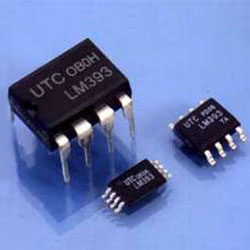
Op Amp Specifications Important For Audio
Selecting op amps for audio is a lot easier than it was the first time I wrote about this topic in 1976 (Audio Handbook, National Semiconductor Corporation, 1976. The reprinted version is the last revision published by National Semiconductor in 1980, compiled and edited by Martin Giles who took over as compiler and editor after I left in 1976. Order copies from Old Colony Sound Lab) .
This is primarily due to the quantity of audio specific chips sold into the automotive and PC industries.
Quantity is what IC companies understand. They live and die by quantity, and for the first two decades, audio was pretty much ignored as a product line. Back then selecting good audio op amps took some digging and required the designer to know quite a bit about audio’s specific requirements.
Things are different now. Audio-grade op amps are sold by the millions each day, and it makes selecting them a lot easier since most IC companies have a separate section in the selection guides for audio.
Here is a summary of the most important parameters (in no particular order):
• Gain-Bandwidth Product, or GBW, equal to at least 3 MHz. This gives plenty of open loop gain (>40 dB) for feedback circuits to still work well at 20 kHz. More is better as long as the phase margin does not get compromised. You want to see a solid phase margin of 60 degrees at the unity gain BW crossing point.
• Slew Rate, or SR, equal to at least 1.5 V/microsecond. This value is necessary to prevent slew-limiting at 20 kHz with full output voltage. In a single-cell world you never have large voltage swings so you never need large slew rates, but it’s nice to have some margin.
• Noise, or Noise Density: normally specified at 1 kHz, along with a graph showing wideband performance. Look for spot noise density at 1 kHz less than 15 nV per square-root-Hz (approximately the noise of a 10-kohm resistor) for low gain circuits (like filters) and less than 4 nV per square-root-Hz (noise of a 1-kohm resistor) for high gain circuits (like mic preamps).
In addition to a low 1 kHz spot noise number, you want to see a low 1/f corner, i.e., you don’t want the low-frequency noise to start rising dramatically until below 20 Hz.
• Total Harmonic Distortion + Noise, or THD+N: This is not a spec to get overly concerned with. As long as the part stays out of whole numbers, you probably don’t have to worry about any audible results. But in the interest of successful marketing, select parts with a THD+N less than 0.1% over the entire 20 Hz – 20 kHz audio range. Today it is very hard to find parts that don’t shine in the THD department.
Low noise, high slew rates, wide bandwidths, and excellent linearity (low distortion) characterize high quality audio op amps. Other important specifications are application driven and include power supply voltage, current consumption, common-mode rejection, power supply rejection, input impedance and size.
The Audio Handbook (see above) describes op amp audio requirements as follows: “The IC must process complex AC signals comprised of frequencies ranging from 20 Hz to 20 kHz, whose amplitudes vary from a few hundred microvolts to several volts, with a transient nature characterized by steep, compound wave fronts separated by unknown periods of absolute silence.
This must be done without adding distortion of any sort, either harmonic, amplitude, or phase; and it must be done noiselessly—in the sun, and in the snow—forever.” Nothing has changed.
Selecting Low-Voltage Op Amps
Good audio requires good parts. Low-voltage information appliances make selecting the right audio ICs even more important—and more difficult. What follows are guidelines and pointers to high-quality audio ICs specifically designed for low voltage designs.
Note: There are too many world wide semiconductor companies to be all-inclusive regarding recommendations. Apologies are made to those left out. The author knows the ICs and companies spotlighted from direct experience. Omission of any company or specific products merely means the author was not aware of them. It is also recognized that many of the ICs mentioned will be outdated immediately upon writing, so always check the manufacturer for the latest part replacing or improving the one discussed.
Stay tuned for the coming articles in this series. Want to get a jump on the reading? Head on over to the Rane Website where you can read this article in its entirety.
Supplied by Rane. For more, go to rane.com
